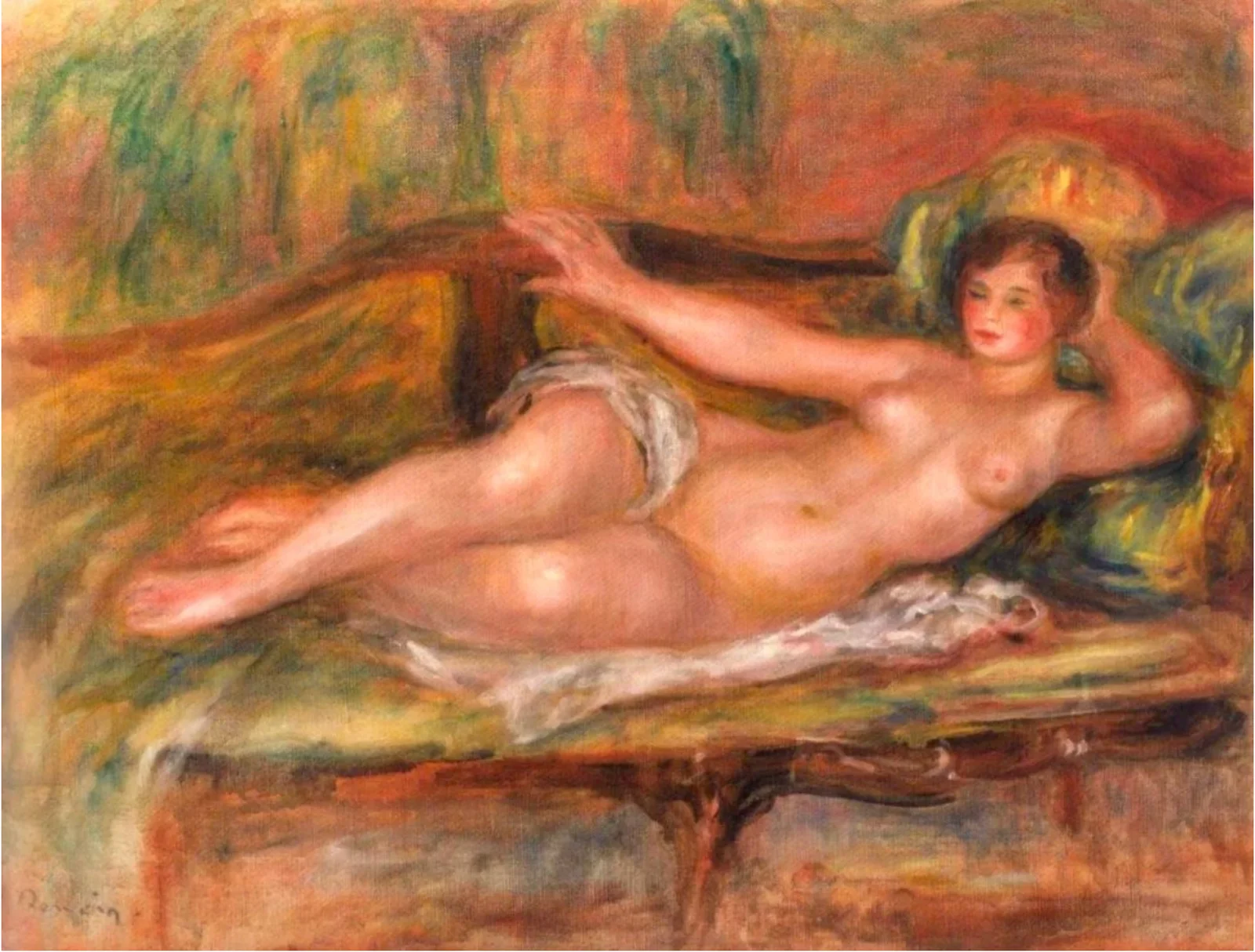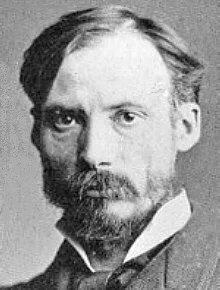
Femme allongée (1915)
Painted in 1915, Femme allongée is a luminous example of Pierre-Auguste Renoir’s late work, where sensuality and softness take center stage. Executed in oil on canvas and signed in the lower right, the 65.2 x 50 cm composition depicts a reclining female figure rendered with Renoir’s signature warm palette and fluid brushwork. In this intimate scene, the artist’s focus shifts from impressionistic light to the tactile richness of flesh and form, reflecting his enduring fascination with the beauty of the human body. Despite physical challenges later in life, Renoir continued to paint with vigor, and Femme allongée captures both his mastery and his devotion to grace, light, and sensual presence.

Pierre-Auguste Renoir (1841-1919)
Stands as one of the most celebrated figures of Impressionism, leaving an indelible mark on the art world with his luminous depictions of scenes from everyday life. Born in Limoges, France, Renoir's journey as an artist began early in life, initially as a porcelain painter and eventually as a student at the École des Beaux-Arts in Paris. His encounters with fellow artists, such as Claude Monet and Alfred Sisley, led him to embrace plein air painting and the revolutionary techniques of the Impressionist movement. Renoir's art is characterized by his masterful use of color and his ability to capture the fleeting effects of light. His soft brushwork and keen observation of human forms and emotions breathed life into his portraits, landscapes, and genre scenes. Renoir's subjects often exuded an atmosphere of warmth and joy, reflecting his belief in the beauty of the everyday and his desire to celebrate life in all its forms. As he matured as an artist, Renoir's style evolved, eventually departing from the more radical aspects of Impressionism in favor of a more classical approach. He sought to bridge the gap between the past and the present, embracing the techniques of Old Masters while maintaining his distinct aesthetic. Renoir's enduring legacy lies not only in his artistic contributions but also in his role as a mentor to younger artists and his influence on the development of modern art.
To provide the best experiences, we use technologies like cookies to store and/or access device information. Consent to these technologies will allow us to process data such as browsing behavior or unique IDs on this site. Not consenting or withdrawing consent may negatively affect certain features and functions.
Market reports for visionary collectors and insiders.